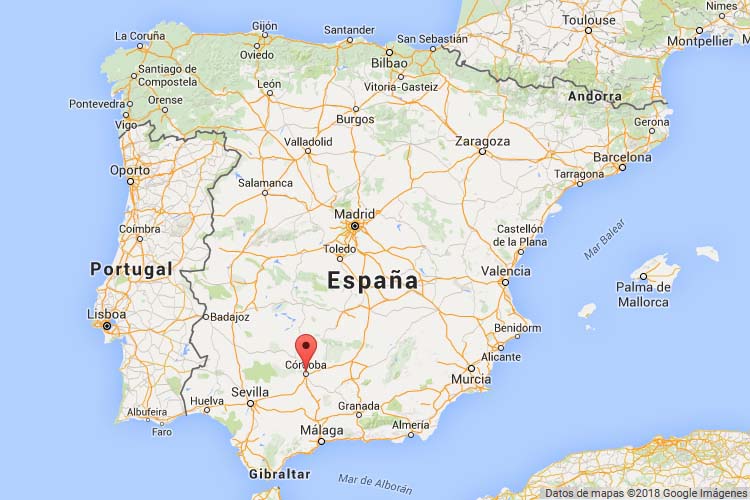Cordoba had already minted coins during the Roman, Visigoth, Andalusi and after the Reconquest In the 14th and 15th centuries. But It had not been included in the Pragmatic Act issued by the Catholic Kings in Medina del Campo on 13 June 1497. Therefore, it had ceased to mint coins, however it maintained the hope of its designation as a mint according to the priest Pedro Díaz de Ribas in his book, "The Antiques and excellencies of Cordoba", in the year 1625, when he talked about the copper and silver from the mines in the province saying:
"If we knew for sure that mill mints would be built to coin... for such fair reasons we hope that the Catholic Majesty of our King Philip IIII will stablish again in this city the Mint House.".
The order for the construction of the Royal Mint of Cordoba is a consequence of the large amount of counterfeit currency of vellon that was in circulation at that time, and as a corrective measure, the Crown, the 30 of October of 1661, commands that all the currency was whipped by mill, for which, were equipped with the accurate active mints, in addition to founding new ones, including the one in Cordoba.
Mr. Diego Fernando de Argote y Mesa was appointed Superintendent of the foundation of the Royal Mint of Cordoba and on November 5, 1661, he gave 722 reales worth 24,548 maravedis to Fray Juan Bautista of the convent of St. Pablo de Cordoba to see the mills of Granada and Seville and to make a study to install the new mills of Cordoba.
On December 1, 1661, 1,300 reales were given to the master builders Pablos de Ginestal and Juan Francisco Hidalgos to see the mills of Granada. Then, when they returned to Cordoba, they studied the possibility of making the Royal Mint in the Molino de Martos on the Guadalquivir River.
This idea did not prosper and on December 7, 1661, Mr. Diego de Gongora Pineda y Vacarico was given 13,000 reales of vellon worth 442,000 maravedis for the purchase of the house of las carretas in the terrain of S. Nicolas de la Villa, bordering the houses that are called "del Olivo" and with which Mrs. Micaela Ramirez lives, and the small square of the houses of the Marquis of Priego and the Royal Street of the "Huerto de los Bañuelos".
This house was bought to be carved on it "The Royal Coin" in four mills. Also, the letter of sale was given and granted before Mr. Juan de Mesa, notary public of Cordoba. The mills to be installed would be of "blood", that is to say, with an energy system based on animal traction.
During the years 1662 and 1663 a new factory is built, and four mills were installed. These began to issue coins of vellon the 5 March 1663 and only worked for 20 months with this material since they never minted in silver or gold. The 17 of October of 1664 the series of vellon was suspended and in 1665 its mills were dismantled and sent to the factory in Seville in 12 carts the 30 of November of 1665.
Most of the coins issued in the mint of Cordoba, were of 16 maravedis during the year 1664, and to a lesser extent in the year 1663. The currencies of 8, 4 and 2 maravedis, also minted in this mint although in a very small number. The mint mark is a leaf or a heart, has a C, indicating the Cordoba Mint, and as assayer appears, normally, the letter T and less frequently an S.
As this mint was only active for such a short time, its existence was forgotten and the minted coins there were doubtfully attributed to the Toledo factory. The mint of Cordobas existence was almost forgotten. Mr. Teodomiro Ramirez de Arellano in his book "Paseos por Cordoba" (Walks around Cordoba) from 1873 to 1877, when writing about the Tax Administration and the Plazuela de la Moneda (Coin Square), said that its name was due to"... to the fact that coins were kept in that old building, owned by the State, and not because the factory had been there...".
It was the work of Antonio Orol and Glenn Murray during the year 1990 in the Simancas Archive on the documents of the Court of Audit, files 890 and 891 and the file 10,556 of the Historical Archive of Cordoba that indicated their existence and later the characteristics of the coins minted in the mint of Cordoba could be clarified.
The Córdoba Mint
| Europe | |
| Spain | |
| Córdoba | |
| Córdoba | |
| 1663 | |
| 1664 |
Historical review
Actual state
The building of the mint does not longer exist, and the configuration of the area has changed drastically. Therefore, its exact location could not be established. In 2006, Rafael Terrell Carver publishes an article about its possible location. To determine the exact location of the Royal Mint, he studied the documents of Simancas Archive and Provincial Historical Archive of Cordoba, as well as those of the Municipal Archive of Cordoba and the Parish Archive of San Nicolas de la Villa. The documents that mainly led to the location of the Casa de las Carretas, which was demolished to build the Royal Mint, have been the census and arms lists of the Municipal Archives of Cordoba.
The Mint had a facade to three streets: to the Plaza de la Moneda, to the street of the Limones (now called Gongora) and to the street of del Huerto del Águila (also known as del Vidrio. Its actual name is del conde de Robledo). Sometimes, the name of the square Plaza de la Moneda (Square of the Coin) is changed to Plaza de la Plata (Silver Square). We can see that in the detail of the area of St. Nicolas de la Villa in the first map of Cordoba in the year 1811. In the year 1765 the municipal registers indicate that this building was dedicated to the Administration of General Revenue and in the year 1793 to the Administration of Tobacco and Provincial Revenue.
After the confiscation of the year 1836, the convent of the nuns of St. Martin, whose facade was at the Plaza de la Moneda, became the property of the City Hall in 1838 which determined its demolition in 1840. With the space freed of constructions, the remodeling of the area and the construction of the paseo del Gran Capitan took place. This fact made disappear the Plaza de la Moneda. The only remaining witness of its existence was the rear facade of the collegiate church of S. Hipolito.
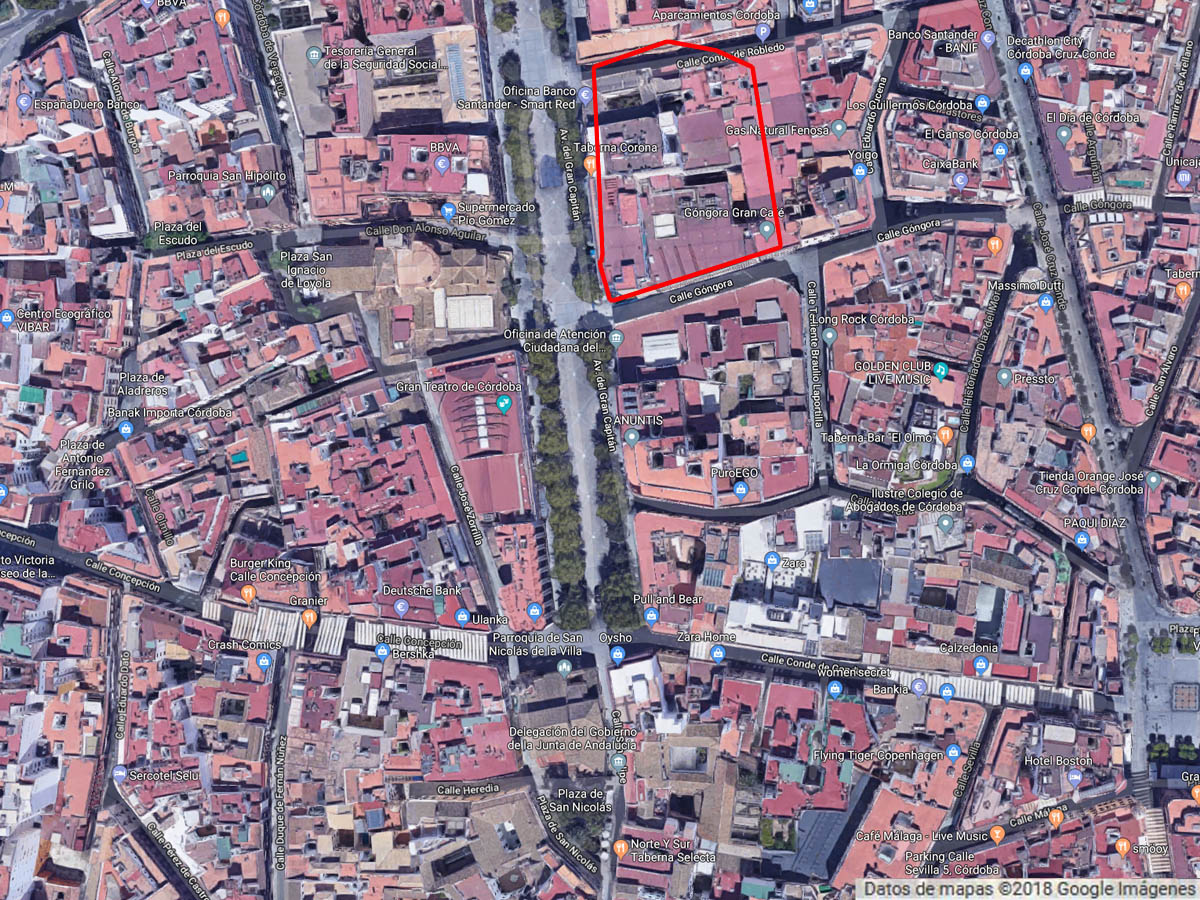
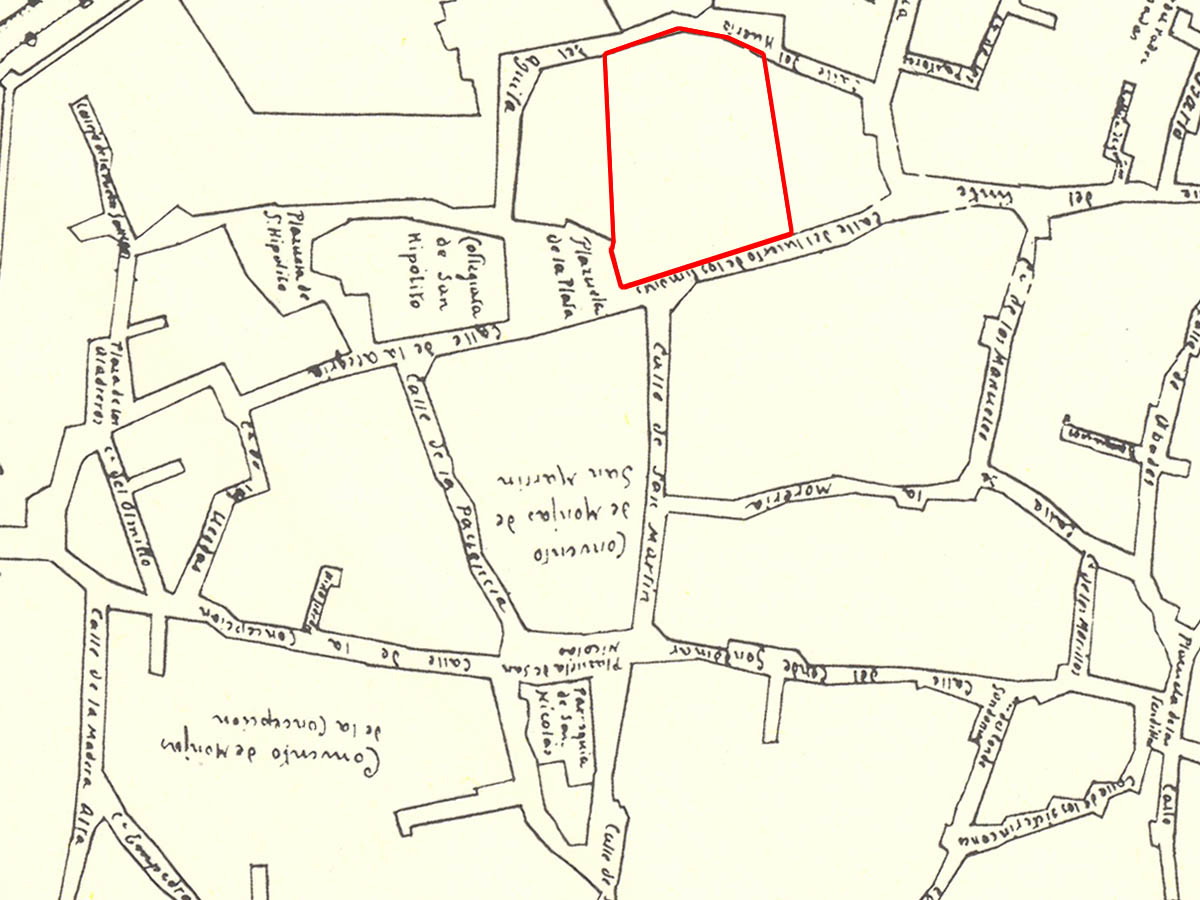
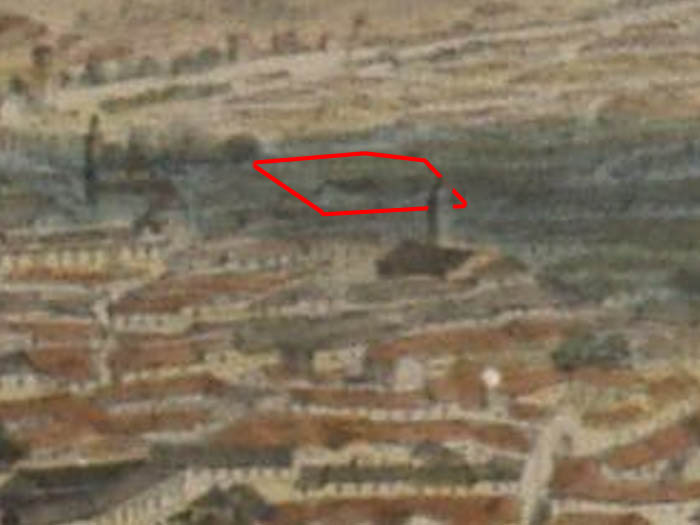
According to Garcia Verdugo, the surface area of the Tax Office's land was approximately 4,700 square meters, of which 2,793.9 square meters continue to belong to the Tax Office building. Subsequently, the orchard and the garden of the building occupied by the Tax Offices were parceled out and the resulting plots were put up for public auction on 13 August 1881.
In 1902, a new building was designed on its site for the construction of a new Tax Office and Courthouse plus a Public School. In this way, the facade is aligned with the new layout of the Gran Capitan street. In the photos one can see the new building of Tax Office already built.
This building remained operational until it was replaced by the current of Tax Office of Paseo del Gran Capitan number 8. First, it was reverted to the state, from the City of Cordoba, through a public deed of 5 June 1976. The works begin on 30 December 1977 and the final acceptance was given on 5 May 1982.
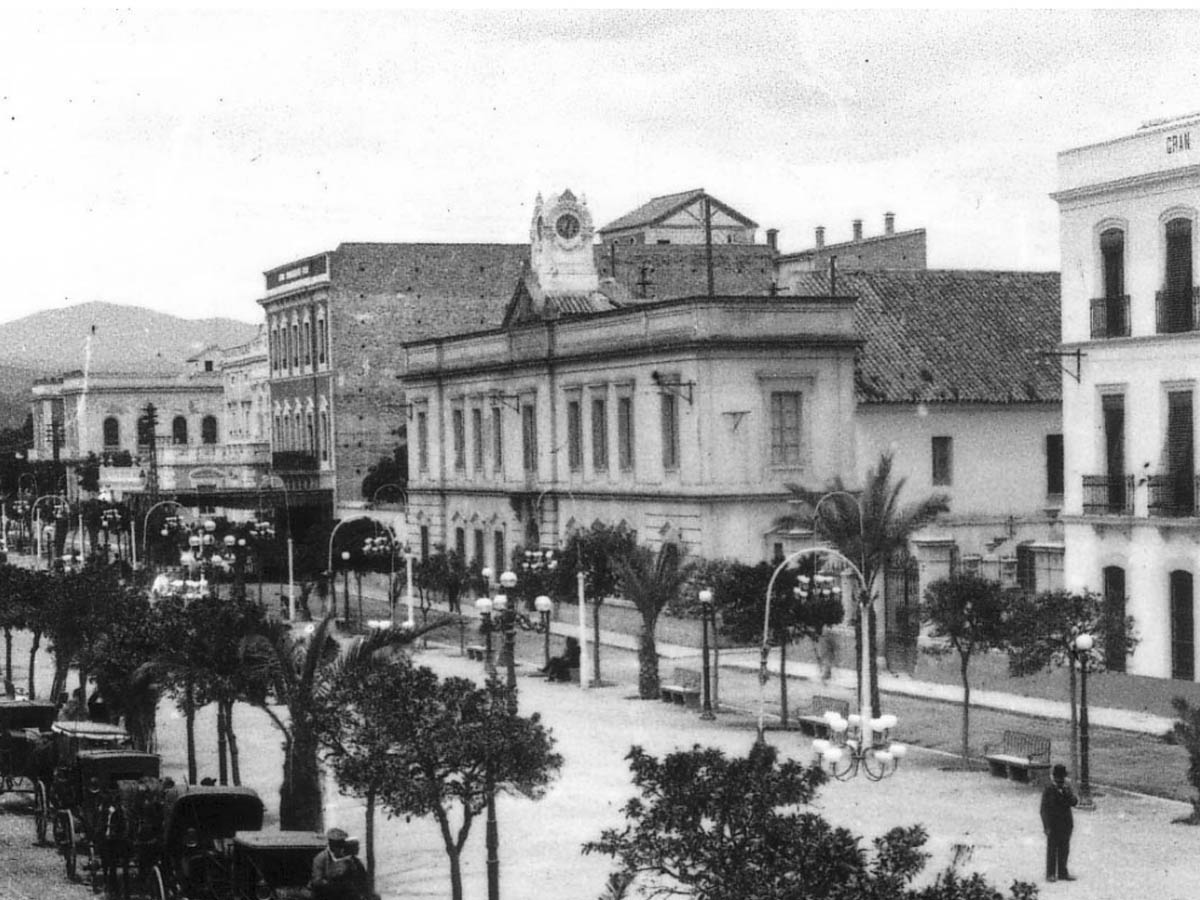
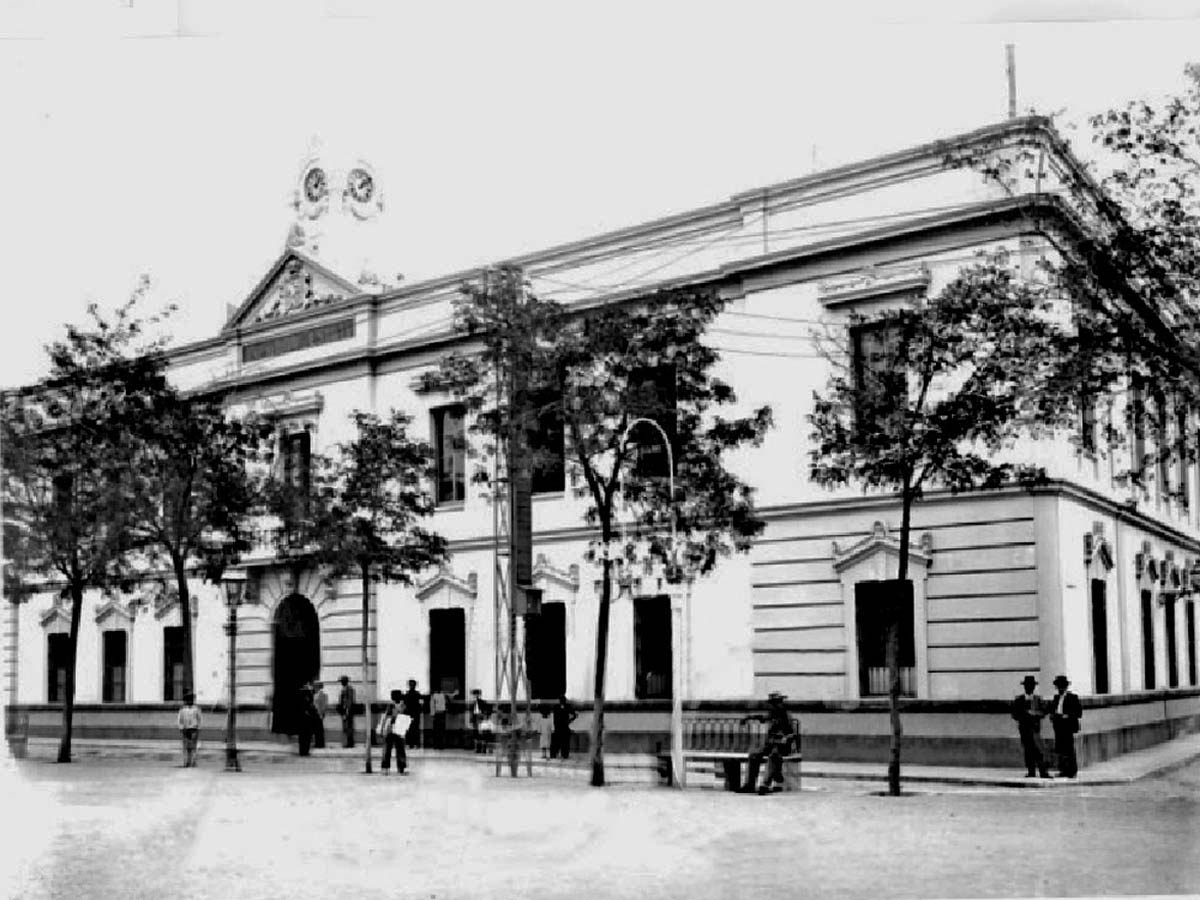
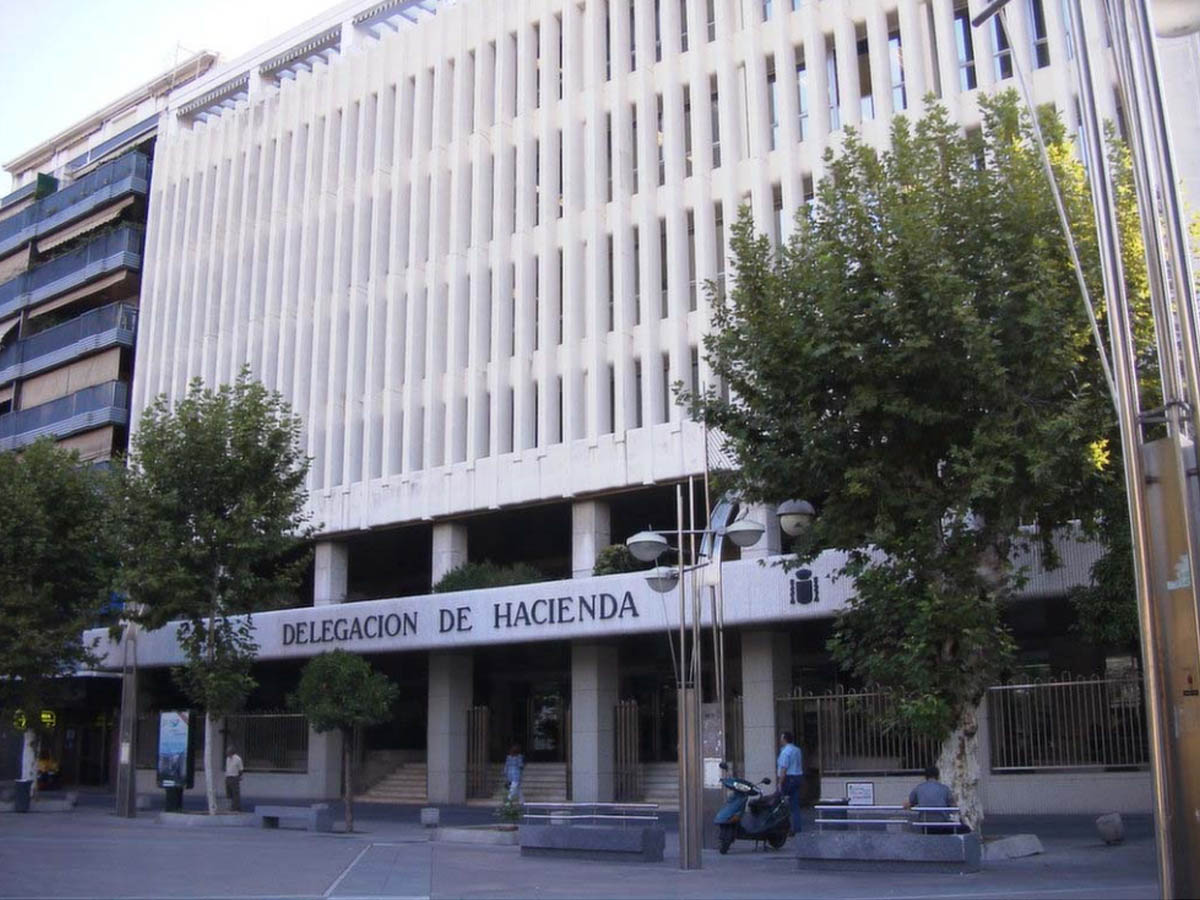
We see how since the purchase of the House of the Carts in 1661 for the construction of the Royal Mint of Cordoba, this place has remained within the administration dedicated to the manufacture of currency and, later and until now, as a delegation of Tax Office.
The Mint had a facade to three streets: to the Plaza de la Moneda, to the street of the Limones (now called Gongora) and to the street of del Huerto del Águila (also known as del Vidrio. Its actual name is del conde de Robledo). Sometimes, the name of the square Plaza de la Moneda (Square of the Coin) is changed to Plaza de la Plata (Silver Square). We can see that in the detail of the area of St. Nicolas de la Villa in the first map of Cordoba in the year 1811. In the year 1765 the municipal registers indicate that this building was dedicated to the Administration of General Revenue and in the year 1793 to the Administration of Tobacco and Provincial Revenue.
After the confiscation of the year 1836, the convent of the nuns of St. Martin, whose facade was at the Plaza de la Moneda, became the property of the City Hall in 1838 which determined its demolition in 1840. With the space freed of constructions, the remodeling of the area and the construction of the paseo del Gran Capitan took place. This fact made disappear the Plaza de la Moneda. The only remaining witness of its existence was the rear facade of the collegiate church of S. Hipolito.



According to Garcia Verdugo, the surface area of the Tax Office's land was approximately 4,700 square meters, of which 2,793.9 square meters continue to belong to the Tax Office building. Subsequently, the orchard and the garden of the building occupied by the Tax Offices were parceled out and the resulting plots were put up for public auction on 13 August 1881.
In 1902, a new building was designed on its site for the construction of a new Tax Office and Courthouse plus a Public School. In this way, the facade is aligned with the new layout of the Gran Capitan street. In the photos one can see the new building of Tax Office already built.
This building remained operational until it was replaced by the current of Tax Office of Paseo del Gran Capitan number 8. First, it was reverted to the state, from the City of Cordoba, through a public deed of 5 June 1976. The works begin on 30 December 1977 and the final acceptance was given on 5 May 1982.



We see how since the purchase of the House of the Carts in 1661 for the construction of the Royal Mint of Cordoba, this place has remained within the administration dedicated to the manufacture of currency and, later and until now, as a delegation of Tax Office.
Source: La Real Casa de la Moneda de Córdoba 1661-1665. Su apertura, cierre y transformación. (Rafael Frochoso). NVMISMA 250.
Translation post-edited and corrected by: Jesús M. García Jiménez
Translation post-edited and corrected by: Jesús M. García Jiménez
Type of coinage
| Period | Gold | Silver | Copper | |
|---|---|---|---|---|
| Felipe IV | 1621-1665 | |||
Source: eNumismatic (José David Rodriguez Soage).
Mint die-sinkers and assayers
| Mark | Period | Names |
|---|---|---|
| S | 1663 | Simón de Tapia |
| T | 1663-1664 | Simón de Tapia |
Source: Glosario de Maestros de Ceca y Ensayadores. (Josep Pellicer i Bru), 1997.
Author:
2018-04-23 .
